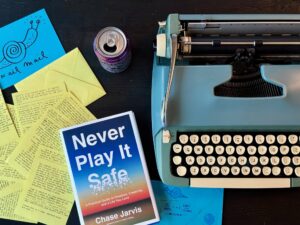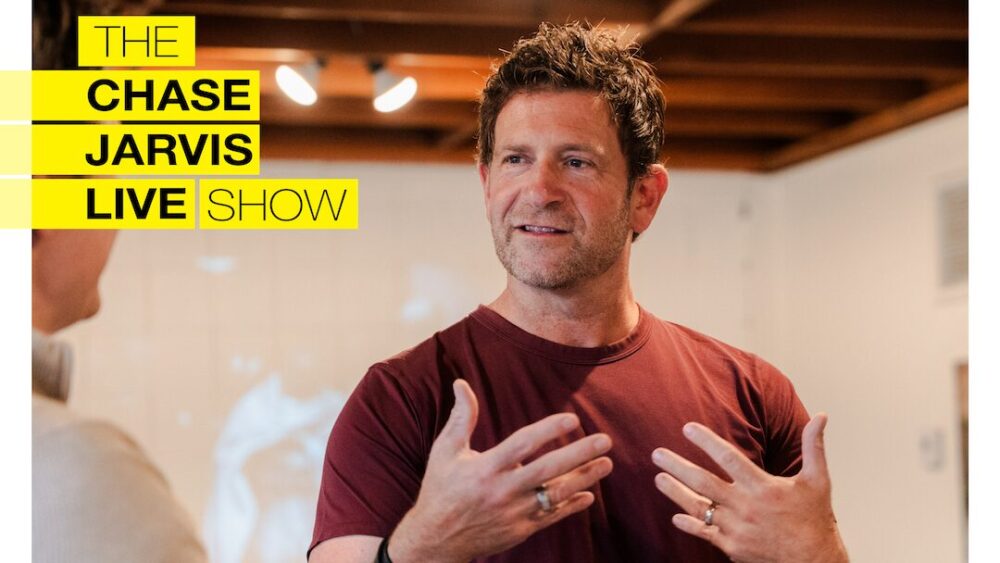Hey everybody, it’s Chase. Today, we’re diving deep into something that fires me up every time I think about it—lifelong creativity. There’s this myth floating around that creativity is just for the young or that it’s something you either have or you don’t. But let me tell you, that’s absolute BS.
Creativity isn’t some finite resource that dries up as you get older. It’s not just for “artistic types.” No, creativity is a muscle. Like any muscle, it can be trained, strengthened, and sustained throughout your entire life. But here’s the kicker—you’ve got to work at it.
Creativity Doesn’t Have an Expiration Date
Some of you might be thinking, “Chase, I’m not in my 20s anymore. I’ve got a job, kids, responsibilities. I don’t have time to be creative.” I get it—life is busy. But let me tell you something: that’s just another excuse. I’ve heard them all, and hell, I’ve used most of them myself at some point.
Here’s the thing: lifelong creativity isn’t just about making art or writing novels. It’s about how you approach life, solve problems, and navigate challenges. It’s about staying curious, staying engaged, and continuing to grow no matter what stage of life you’re in.
In Never Play It Safe, I lay it out like this:
“You don’t have to start a revolution. You don’t have to quit your job, move to a different country, get a new set of friends, or blow up your life. (Or maybe you do. That’s up to you.) But to create the life you want, you do have to make a choice between mediocrity and excellence, between what others want for you and what you want for yourself, between fulfilling your potential and hoping that whatever you’re doing now will be enough, between playing it safe and playing by your own rules.”
This applies to creativity just as much as anything else in life. You’ve got to choose to prioritize your creativity, to nurture it, to keep it alive even when life gets hectic or challenging.
Youthful Creativity: Fearless Experimentation (and How to Get It Back)
When we’re young, creativity flows naturally. We’re not bogged down by self-doubt or fear of failure. We create for the sheer joy of it. Think about when you were a kid, finger-painting without a care in the world. You didn’t worry about whether your art was “good”—you were just having fun.
As we move into our teens and early twenties, this fearlessness often leads to bursts of creativity. We’re willing to take risks, try new things, and push boundaries. This is the time to experiment, to find your voice, and to figure out what lights you up.
Here’s a secret: You can tap into that youthful creativity at any age. It’s all about mindset. In Never Play It Safe, I talk about the importance of play:
“Play is not board games, glue sticks, and glitter, and it’s definitely not just for kids. Relish in remembering that play is the engine of life. Recapture the joy and energy in everything you do to drive better outcomes and put everything into a broader perspective.”
Whether you’re 25 or 75, approach your creative pursuits with a childlike sense of play and experimentation. Don’t worry about the outcome—focus on the process and the joy of creating.
View this post on Instagram
Mid-Life Creativity: The Balancing Act and the Deep Dive
By the time we hit our 30s, 40s, and 50s, life usually gets more complicated. Careers, families, mortgages—it’s easy to let creativity take a back seat. But here’s the twist: this phase of life is also when our creativity can really start to deepen and mature. We’ve lived, learned, and gained insights that only come with experience.
The key is integration. Don’t see creativity as something separate from your “real life.” Find ways to weave it into your daily existence. Maybe you can’t spend hours in a studio every day, but can you sketch during your lunch break? Can you write a few lines of poetry while waiting for your kid’s soccer practice to end?
And remember, constraints can actually fuel creativity. In the book, I write:
“The world places limits on us, but it’s the limits and constraints we apply to our own lives that give us a massive advantage when it comes to unlocking a bold and creative life. In many cases, you’ll learn to leverage the very thing that’s been holding you back.”
Creativity in Later Life: Wisdom, Perspective, and Fearlessness
As we move into our 60s, 70s, and beyond, we bring a lifetime of experience to our creative pursuits. This is a time for reflection, synthesis, and creating work that’s rich with the wisdom we’ve gained over the years—a true testament to lifelong creativity.
Some find that retirement or reduced work responsibilities give them more time for creativity. But even if you’re still working full-time, there’s a depth and perspective that comes with age that can greatly enhance your creative output.
Here’s a surprising truth: many people find a renewed sense of fearlessness in later life. You’ve lived through ups and downs, survived challenges, and have less to prove. Use that confidence to take creative risks, try new things, and create boldly and authentically.
Adapting Your Creative Practices as Life Changes (And Why That’s a Good Thing)
Life is unpredictable. Your creative routine in your 20s might not work in your 40s, and that’s perfectly fine. Maybe you used to do your best work late at night, but now you’re a morning person. Roll with it. Adapt your practice to fit your current life, not the other way around.
Find inspiration in new experiences. Travel if you can, even if it’s just to a new neighborhood in your city. Read widely. Talk to people different from you. Creativity thrives on new inputs, so keep feeding your mind with fresh experiences and ideas.
And balance is key. This might mean negotiating time with your partner, setting boundaries at work, or learning to say no to commitments that don’t serve you. Your creativity is important. It deserves time and space in your life.
Overcoming Creative Blocks: Reframe the Block, Don’t Fight It
Let’s get real—creative blocks happen to everyone. The key is not to let them derail you. In Never Play It Safe, I talk about reframing failure:
“It’s time you completely reimagine failure as a stepping-stone to success. This isn’t a trite phrase with a pot of gold at the end of the rainbow. Life isn’t about avoiding mistakes—it’s about recovering quickly and learning to trust yourself again and again.”
Creative blocks are not failures—they’re just part of the process. When you hit a block, don’t beat yourself up. Instead, get curious. What’s causing it? Is it fear? Perfectionism? Burnout? Once you identify the cause, you can start to work through it.
Sometimes, the best way through a block is to just keep creating, even if what you’re making feels like crap. Other times, you might need to step away and recharge. Trust your instincts, and remember—this too shall pass.
Evolving as a Creator: Embrace the Change
As you move through life, your creative interests and outputs will evolve. This evolution is at the heart of lifelong creativity. The poetry you wrote in your 20s might give way to novel writing in your 40s, which might transform into memoir writing in your 60s. Or maybe you’ll discover a completely new creative pursuit later in life.
Embrace this evolution. Don’t get stuck in one identity as a creator. Allow yourself to grow, change, and explore new facets of your creativity.

From my book Never Play It Safe:
“The sum of all these parts: practice is the art of consistent action. Thinking about what you want is not enough. The actions that make up your days will shape your life into what it ultimately becomes, so what and how you practice matters.”
Keep practicing, keep creating, keep showing up for your creativity day after day, year after year. That’s how you sustain a creative life.
Sustaining Your Creative Fire: The 5 Essentials
- Nurture Curiosity and Playfulness: Never stop asking questions, never stop exploring.
- Build a Supportive Creative Community: Surround yourself with people who inspire and challenge you.
- Make Creativity a Priority: It’s easy to let other things take precedence, but remember—your creativity is a vital part of who you are. It deserves time and attention.
- Practice Self-Compassion: Some days, the creativity will flow. Other days, it’ll feel like pulling teeth. Be kind to yourself through all of it.
- Stay Open to Change: As you evolve, so will your creativity. Embrace it.
Remember, creativity isn’t a destination—it’s a journey. It’s not about producing masterpieces every day. It’s about staying engaged, staying curious, and continuing to grow and evolve as a creator throughout your entire life.
So, what are you waiting for? Your creative journey is calling. It’s time to answer, no matter what stage of life you’re in. Because trust me, it’s never too late to start, and it’s always too early to stop.
Now go out there and create something. Anything. Your future self will thank you for it.

















